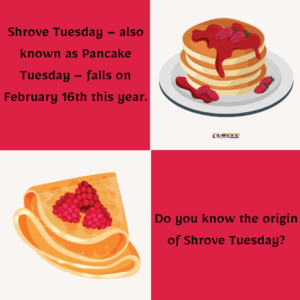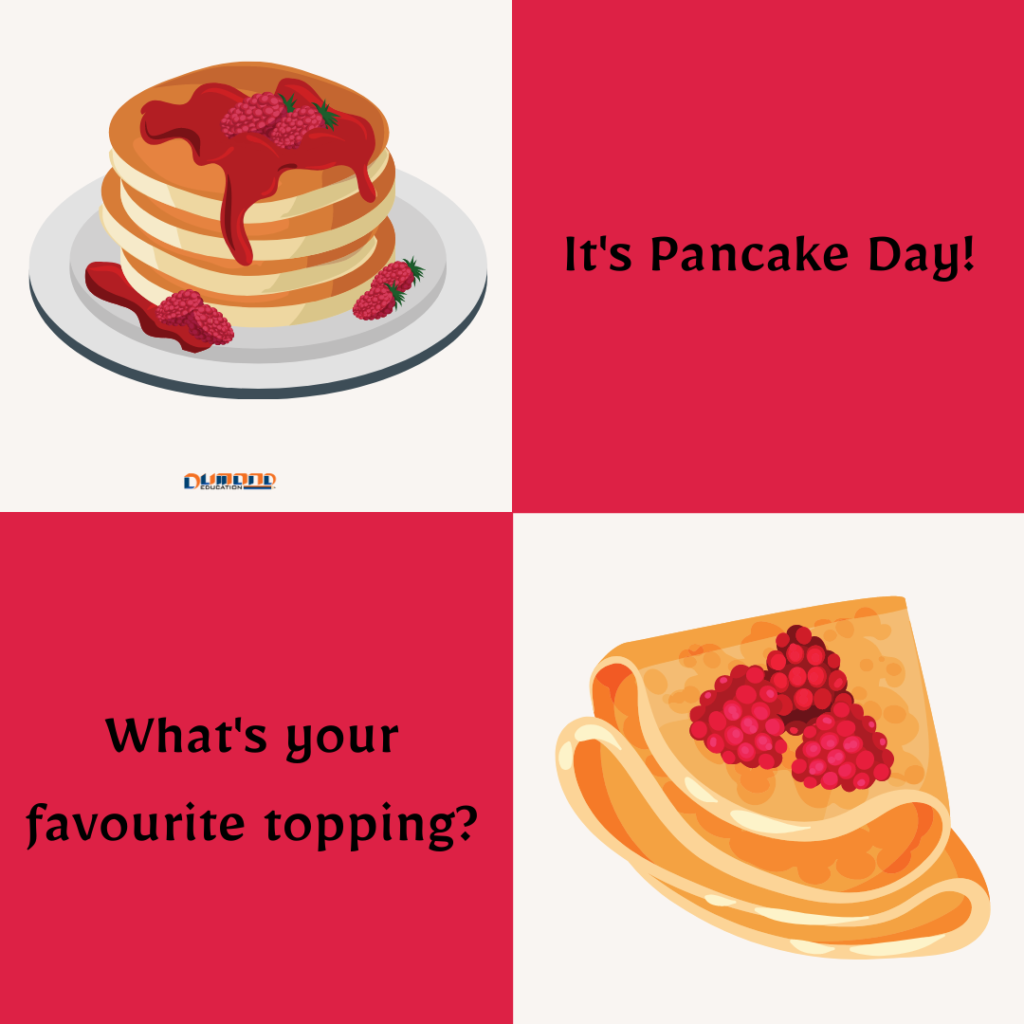As you know, here at Dumond, we love to promote language, learning and family fun. Social media followers will already have seen a couple of our #onthisday #conversation starters marking Pancake Day.

Making pancakes is a great family activity, supporting children to develop important life skills. We cannot underestimate the importance of being able to cook. As they measure the ingredients, they are developing their maths skills whilst reading the recipe promotes literacy. Having children explain the process afterwards is a brilliant opportunity to support the development of procedural language and sequencing. And let’s not forget the fun of the flip: do you have the motor skills to toss your pancake in the air and catch it?
Keen to get cooking?
There are endless recipes for pancakes. You can try traditional pancakes, American blueberry pancakes, fluffy Japanese pancakes, classic crepes, savoury pancakes or vegan banana pancakes. This just represents 6 choices from 5 pages of pancake recipes on the BBC Good Food website!
What about the history of the day? Why is it celebrated?
Pancake Day is also known as Shrove Tuesday, Pancake Tuesday, Fat Tuesday or Mardi Gras. This is a traditional feast day held before the day before the beginning of the Lenten period on Ash Wednesday. In the Christian church, Lent is a period of fasting held in the 40 days leading up to Easter. This is to mark the 40 days Jesus spent in the desert fasting, praying and being tempted by the devil.
Shrove Tuesday always falls 47 days before Easter, so the date moves but it will always be between February 3 and March 9. On this day, it was custom to use up all the fats and eggs before the beginning of the fasting period. Hence, ‘Fat Tuesday’ (or ‘Mardi Gras’ in French). As making pancakes was a common way to use up these supplies, the term ‘Pancake Day’ took hold.
It was custom to go to confession on Shrove Tuesday to be “shriven” from (absolved of) your sins.
Did you know the Latin verb scribere (meaning “to write”) was brought to Britain in the early Middle Ages by some Germanic peoples? As it was used for laying down directions or rules in writing, 8th-century Old English speakers used their form of the term, scrīfan, to mean “to assign, decree, prescribe or impose.”
The Church adopted scrīfan and so it came to mean:
- to hear the confession of (a penitent)
- (transitive) to impose a penance upon (a penitent) and grant him or her sacramental absolution
- (intransitive) to confess one’s sins to a priest in order to obtain sacramental forgiveness
Today shrift, the noun form of shrive, makes up half of short shrift, a phrase meaning “little or no consideration” or receiving very little attention. Originally, short shrift was the barely adequate time for confession before an execution.(See: Merriam Webster). In the 17th century, criminals were sent to the scaffold immediately after sentencing and only had time for a cursory ‘short shrift’ before being hanged. (Source)
Developing Language
Try having your child use ‘short shrift’ in a sentence. What are some things (s)he would give ‘short shrift’ to?
As well as being an idiom, short shrift’ is a collocation, i.e. it is a group of two or more words that is almost always used together. Other examples include to break a habit, deep pockets, bread and butter or can’t complain. So that’s long and short of it! A brief look at the history of Shrove Tuesday and a quick examination of the etymology of shrove and related words.
As you devour your pancakes today, my challenge to you is to come up with as many phrases or collocations as you can featuring the word ‘short.’
Have fun!
P.S.: If you’re like me and like to check how well you did, you might find this page on Phrases.com helpful.

